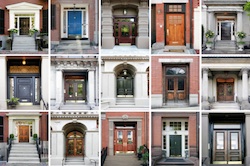
The Harvard Law School website featured a story about the Ministry of Justice in Chile hosting Harvard Law School Mediation and Clinical Program students Leah Kang (HLS ’12), Teresa Napoli (HLS ’13), and Apoorva Patel (HLS ’13), as well as HNMCP Clinical Instructor and Lecturer on Law Jeremy McClane (HLS ’02) so that the students could present their research on Chile’s Unidad de Justicia Vecinal or “Neighborhood Justice Unit” program, which provides access to forums for dispute resolution to residents of the greater Santiago metropolitan area. The program began after the Chilean Ministry of Justice asked the Harvard Negotiation and Mediation Clinical Program to study its neighborhood justice units and to evaluate the Chilean model according to the tenets of alternative dispute resolution and dispute design systems theory.
The students helped study the applicability of this concept on a national scale, addressing the dual concerns of filling a lack of access to dispute resolution in courts, as well as providing an alternative forum for dispute resolution. Additionally, the students performed research in the form of site visits as well as by interviewing stakeholders and observing courthouse processes.
The multi-door courthouse idea was pioneered by Harvard Law School Professor Frank E. A. Sander (HLS ’52) who envisioned that the concept could open up many new venues for a range of alternative dispute resolution options previously unavailable to disputants, including mediation, conciliation, arbitration, legal representation, and social services.




